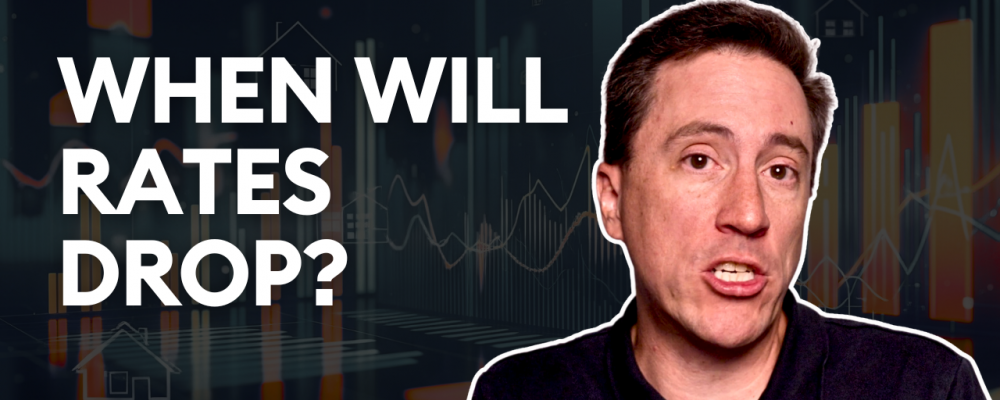
The information provided is based on the published date.
Key takeaways
- Mortgage rates are directly linked to yields on long-term Treasury bonds, meaning higher Treasury yields will keep mortgage costs elevated for homebuyers.
- Concerns about federal deficits and persistent inflation are pushing Treasury yields higher, creating a significant headwind for lower mortgage rates in 2025.
- The proposed privatization of Fannie Mae and Freddie Mac introduces new uncertainty for the mortgage market, which could add upward pressure on rates for borrowers.
- Barring a significant economic recession that would likely trigger Fed rate cuts, mortgage rates are expected to remain stubbornly high for the foreseeable future.
Mortgage rates have remained stubbornly elevated, hovering around 7% for much of the last three years. Many are understandably hoping for rates to drop, whether to purchase a new home or to refinance an existing mortgage. This analysis will explore the key drivers of mortgage rates and offer our perspective on where they might be headed next.
The unfortunate reality is that a significant decline in mortgage rates seems unlikely in the coming months, barring a substantial economic downturn. To understand this forecast, it’s essential to first delve into how mortgage rates are determined.
Source: Freddie Mac
How your mortgage rate is set
The first thing to understand is that approximately 70% of all residential mortgages in the U.S. are packaged into bonds (known as mortgage-backed securities, or MBS) and sold to institutional investors. While you may continue to send your monthly payment to your local bank, that bank is likely just servicing the loan – processing the payment and passing the funds along to the ultimate owners of the bond.
Consequently, when your bank determines the interest rate to offer you on a new mortgage, it is primarily calculating the rate required to (profitably) sell your loan to these investors.
Two major factors influence the rate you are offered. The first is the cost to guarantee your loan against default. Nearly all mortgages sold to investors are guaranteed by a government-sponsored enterprise (GSE) – either Fannie Mae, Freddie Mac, or Ginnie Mae. These agencies charge a fee, which is baked into your rate, based on the perceived risk of your loan. Factors like your credit score, the size of your down payment, and your debt-to-income ratio all significantly influence this fee and, by extension, your mortgage rate.
However, these guarantee fees tend to be relatively stable over time. To understand what causes broad movements in mortgage rates for everyone, we must focus on the second, more dynamic driver: the U.S. Treasury bond market.
The critical link to Treasury bonds
As mentioned, almost all mortgage bonds are guaranteed by government-sponsored agencies. This makes the typical buyer of these bonds—pension funds, insurance companies, foreign governments—the same type of investor that would consider other government-backed debt, most notably U.S. Treasury bonds. This means these large bond investors are constantly comparison shopping between mortgage bonds and Treasury bonds.
An analogy can be made to shopping for chicken versus beef at the grocery store. While they have different prices, if the price of beef were to surge for some reason, many shoppers would shift to buying more chicken. This sudden increase in demand would, in turn, push up the price of chicken. A clear relationship exists between the prices of these two substitute goods.
Similarly, a fairly predictable and stable relationship exists between the yield on longer-term Treasury bonds (like the 10-year Treasury note) and the yield on mortgage bonds.

Source: Freddie Mac, Bloomberg
Since the yield on mortgage bonds directly drives the rate banks are willing to offer on new home loans, the key question becomes: what will cause longer-term Treasury rates to decline?
Unfortunately, the opposite has been happening recently. Longer-term Treasury rates have been rising due to a combination of inflation concerns, partly related to proposed tariffs, and worries about increasing federal budget deficits. As these pressures are unlikely to disappear soon, it will be difficult for Treasury rates to fall substantially in the near term. If so, this will probably keep mortgage rates elevated.
The major exception to this would be if the economy were to fall into a significant recession. In that scenario, inflation would likely decrease, opening the door for the Federal Reserve to implement a series of interest rate cuts. This would almost certainly cause both Treasury and mortgage rates to drop meaningfully.
A new wrinkle: The privatization of Fannie Mae and Freddie Mac
Adding a layer of complexity to the outlook, President Trump has recently stated a desire to reprivatize Fannie Mae and Freddie Mac. These two agencies, which are the primary guarantors of mortgage bonds, were semi-private entities before they failed during the 2008 housing crisis. At that time, they were taken into government conservatorship, where they have remained ever since.
How such a privatization would be accomplished is very much an open question. The process is fraught with legal and financial complications, not the least of which is the approximately $340 billion that Fannie and Freddie still owe the U.S. Treasury from their bailout. It is unclear how they could repay this sum, and forgiving such a large loan is unlikely to be politically palatable, especially given the aforementioned concerns about the budget deficit.
Beyond the logistical hurdles, there is a legitimate concern that any effort to privatize Fannie and Freddie could result in higher mortgage rates. Currently, the bonds they guarantee are considered to be fully backed by the federal government, making them extremely safe investments. Would that explicit backing change after privatization? The risk-based guarantee fees are currently set by Fannie and Freddie's federal regulator; how would those fees change if the agencies became for-profit entities seeking to maximize shareholder value?
To be fair, the Trump administration appears to be aware of these issues. Bill Pulte, who runs the Federal Housing Finance Administration (FHFA), has stated that any privatization plan would be contingent on managing the impact on mortgage rates. It is also likely that such a complicated undertaking would take multiple years to complete.
Regardless, the prospect of privatization is likely to create some level of uncertainty in the bond market, and uncertainty tends to cause rates to rise. Therefore, if there is an effect from this initiative in the near term, it is more likely to be upward, rather than downward, pressure on mortgage rates.
Conclusion: High rates may persist
For the many people hoping for lower mortgage rates to refinance a loan or purchase a home, the current outlook offers little immediate relief. It appears mortgage rates are unlikely to come down in a big way unless the economy enters a recession. Absent that, there are simply too many factors—persistent inflation worries, large budget deficits, and new uncertainty surrounding the future of Fannie and Freddie Mac—working to keep interest rates at these elevated levels, or potentially even push them higher.
Tom Graff, Chief Investment Officer
Facet Wealth, Inc. (“Facet”) is an SEC registered investment adviser headquartered in Baltimore, Maryland. This is not an offer to sell securities or the solicitation of an offer to purchase securities. This is not investment, financial, legal, or tax advice. Past performance is not a guarantee of future performance.


